2026 Author: Erin Ralphs | [email protected]. Last modified: 2025-01-22 21:14:12
The history of almost every enterprise shows that not all prototypes are destined to become serial.
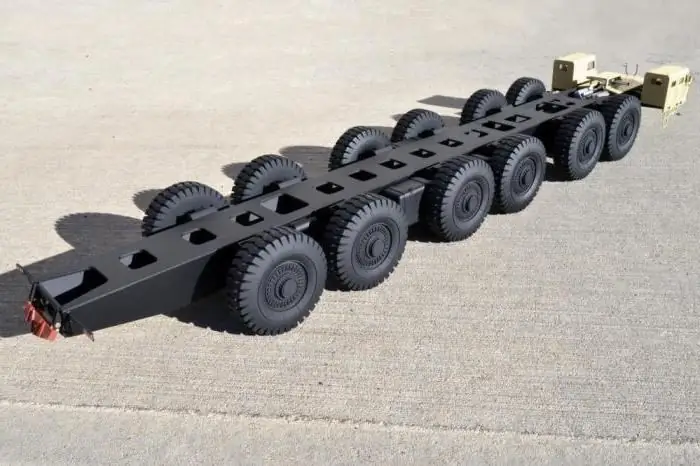
Wheel tractors and missile carriers, produced in 1983 at the automobile plant in Minsk, have always been admired by everyone due to their weighty power and size. Nevertheless, the parameters are more massive than those possessed by the Topol missile system (the MAZ-7912 and 7917 with seven axles served as the base for it), differs from the MAZ-7904 counterparts.
Legendary Giant
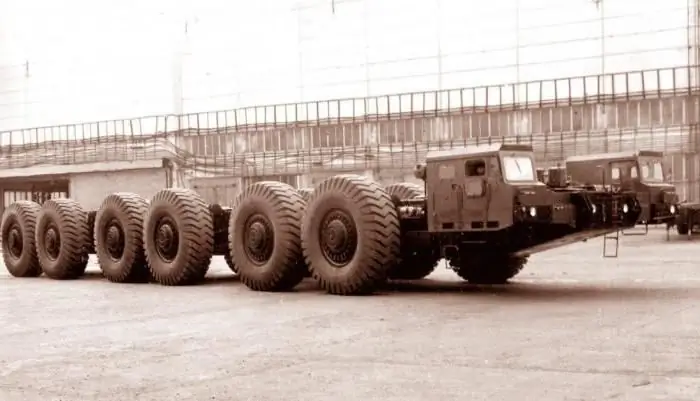
Only a few designers and the military were aware that these special chassis existed in the Soviet era. The decline of the period of Soviet rule, which fell on the 80s, is marked in world history by the fact that new models of giant cars were created on the territory of a special MAZ design bureau. Their uniqueness was confirmed not only within the territory of the USSR, but throughout the world.
Only after the collapse of the country released information regarding these gigantic top-secret machines. Among such late Soviet giants is the MAZ-7904 with six axles. The design of this machine took place at the end of the 70s.
The impact of the confrontation of countries on the creationgiant

The beginning of the 80s was marked by the fact that in the confrontation between the Soviet Union and the United States of America during the Cold War, the highest point of heat was reached. Previously, a similar intensity of relations manifested itself in the midst of the Caribbean crisis. The two superpowers vividly demonstrated their nuclear power to each other. February 1980, as a result, became the period of the release of the order of the minister, head of the automobile industry of the Union. According to this order, the Minsk Automobile Plant was obliged to develop a special wheeled transporter - MAZ-7904. Technical characteristics of the highest level had to demonstrate this giant. In addition, they had to be accompanied by particularly significant carrying capacity. The Tselina missile system required such a carrying capacity for an autonomous transport and launcher. MAZ-7904 project "Tselina", by the way, fully satisfied.
Project Manager

The designed machine with this index was created under the guidance of B. Shaposhnik, already middle-aged (80 years old) at that time. He was also the project manager for the creation of the first Soviet mining giants MAZ-525 and MAZ-530, as well as all subsequent MAZ military tractors and multi-axle chassis for many of such complexes as Elbrus, Topol and Pioneer . At the same time, in this particular situation, Shaposhnikov was faced with a difficult task. This is due to the fact that the transport and launch container,launch equipment and a rocket for the Tselina complex have a total weight of 220 tons. The MAZ-7904 model itself should have had a curb weight of 140 tons. It was assumed that the weight of the new transport chassis and missiles would be within 360 tons. The MAZ-7904 project was a car with incredible weight and dimensions, the development of which would take a lot of effort.
State transformations
In February 1981, the Minsk Automobile Plant organized an interdepartmental meeting with the participation of:
- ministers in charge of the automotive, defense and electrical industries;
- Commander of Strategic Missile Forces;
- deputy minister of defense for armaments;
- chief designer of units for ground equipment of OKB-1 missile systems of the Barrikady plant;
- chief designer of MIT and the Tselina missile system;
- other high-ranking designers and bosses.
Of course, there was a discussion of the Tselina project and the transport chassis being developed for it, which has the name MAZ 7904. One of the largest cars in the world for its creation required that Shaposhnik had to:
- refer to the complexity of the tasks;
- demand to expand the staff of designers in the bureau (approximately 100 people);
- allocate living space for them.
Fulfilling a number of requirements
All his demands were taken seriously and promptly fulfilled. ministerIn the automotive industry, V. Polyakov allocated a budget for an additional wage fund for these professionals, and the Union Ministry of Defense paid for all the real estate necessary for their resettlement. In addition, Polyakov initiated the equipping of the building in which Shaposhnik's office was located with an elevator. This allowed the elderly designers to have the opportunity to go up to their third floor. The office of the chief designer was additionally transformed by repairs.
Design details
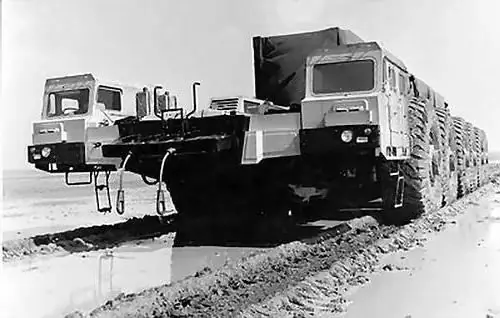
Although the MAZ-7904 super tractor weighed a lot and thus provoked new difficulties, June 1983 was marked by the completion of work on the first, and later it turned out that at the same time as the last, model of this transport. The giant with two cabins had fantastic dimensions. As a material for the cabins, the specialists of the Osipovichi plant decided to use fiberglass. Thus, it was possible to reduce their weight. The length of the tractor reached 32.2 m. It had a width of 6.8 m. The height (ground - roofs of parallel cabs) was 3.45 m. As a basis, this giant had a powerful welded supporting frame. A pair of hydromechanical 4-speed transmissions (having two reverse gears) was fixed on it. The supply of wheels for the MAZ-7904 USSR was provided by a well-known Japanese manufacturer - Bridgestone. The deal was formalized as if the USSR was buying wheels to complete three mining dump trucks. At that time, the domestic industry did not have the opportunity,means, equipment and technologies necessary for the production of tires that would be designed to withstand such loads. This entire structure was held by 12 huge wheels (their diameter exceeded 3 meters). MAZ-7904 was created as an all-terrain chassis, in connection with this, its distinctive feature was all-wheel drive (wheel formula 12x12), and the ground clearance was almost half a meter. For the implementation of the all-wheel drive, the onboard method was used (by means of two synchronized hydromechanical transmissions). Both a pair of front and a pair of rear axles of the conveyor were steerable. This was the guarantee that the turning radius would be limited to 50m. Two engines also distinguished it from the number of analogues. The first - a marine V-shaped 12-cylinder diesel engine M-350 (it was produced by the Leningrad Zvezda software) - had a capacity of 1500 horsepower. It was supplemented by gas turbine supercharging. Thanks to him, the machine itself was set in motion. Due to the second - a 330-horsepower diesel V8 YaMZ-328 - energy production was provided for the giant's auxiliary systems. It was supplemented by a turbocharger, which was used for the drive:
- hydraulic steering pumps;
- generators;
- fans;
- high and low pressure compressors.
The highest level of secrecy
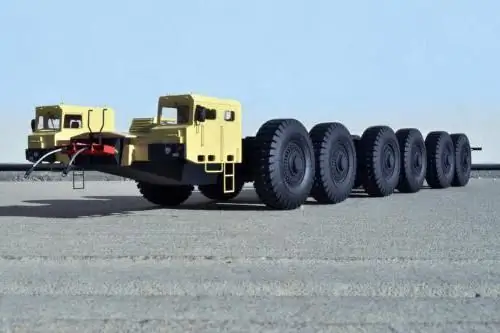
Secret factory testing and running-in of this unit occurred exclusively in the dark. At the same time, these measures were coordinated with the military. under their controlthe time of the break-in was set. For this, the airspace of Soviet Belarus should not have been occupied by Western spy satellites. After the machine rolled 547 km around the Minsk environs, it was dismantled, loaded onto a special 12-axle platform and sent to the territory of Kazakhstan (to the cosmodrome of the Baikonur city of the same name).
Reasons for the giant's connection with Kazakhstan
There were several reasons for this decision. If there is a leak of information that clarifies a classified development, then the version of the explanation for its creation will be the transportation of a large-sized indivisible block (or several indivisible blocks) of space rockets (for example, Energia rockets). The second reason was determined by the nature of the true purpose of this machine, and Kazakhstan had a direct connection with it. The military sought to create conditions for a group of 10 such giants to constantly run within a closed multi-kilometer route in the middle of the steppes of Kazakhstan. Each of these ten chassis had a so-called "house". It looked like a hangar. As part of one of them (or maybe several), it was planned to equip the hangar with a launcher with a rocket. At the same time, it was theoretically assumed that it would be an impossible task for the enemy to find out in which one or in which hangars the installation is located. This idea cannot be called new at that time. On the territory of the USSR, one train already ran, and even a group of them. It was disguised as a freight or passenger train. At the same time, an intercontinental nuclear missile was located inside it, ready at anyan unexpected second for the enemy to strike back at the Pentagon.
Unrealized plans
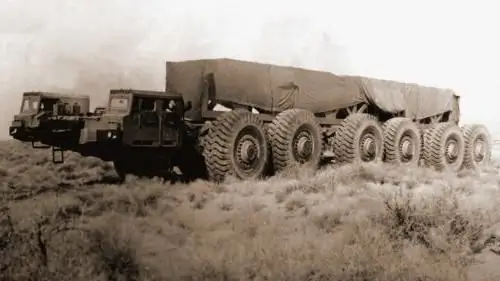
Whether this outcome is positive or negative for the world is unknown, but the idea of such a moving column was not realized.
The only model of this machine could not even be equipped with a hangar.
During the Kazakh tests, after passing the car 4100 kilometers (the developed maximum speed was fixed within 27 km/h), it turned out that there was a significant negative moment. The supporting surface was under the influence of excessive specific pressure, while a huge load of 30 tons was directed to each wheel. As a result, this resulted in reduced cross-country ability, rigidity and poor handling. In the case of this ballasted, slow-moving vehicle, movement was only possible within hard pavements.
Shaposhnik even in the process of work was afraid that a huge axial load would provoke the fact that the wheels of the chassis would fail and not get stuck in the ground.
As a result, at the beginning of 2007, it turned out that after many years of storage of the car in the hangar of the Zenit launch (this area was owned by the civil organization "Design Bureau of Transport Engineering"), it collapsed under the influence of rust. In 2010, she was cut into scrap metal.
Recommended:
Wheel tractor MAZ-538: description, specifications, purpose and history of creation
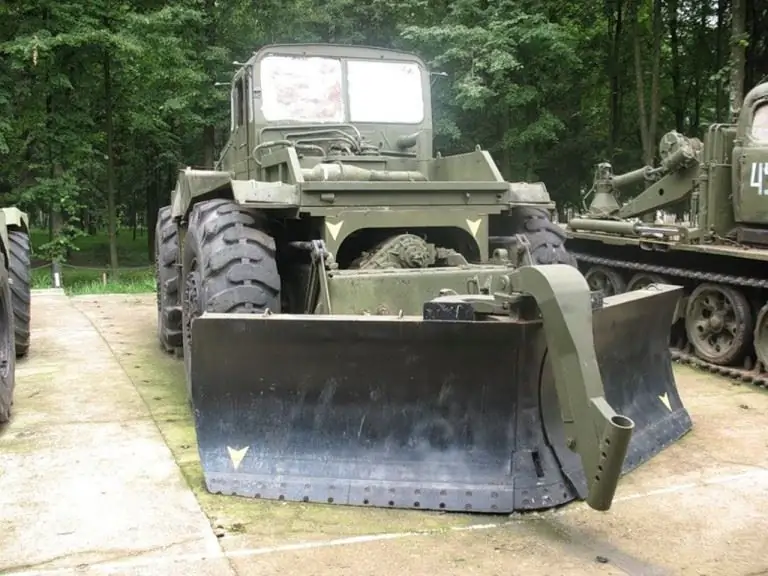
Wheel tractor MAZ-538: description, history of creation, design features, photo. MAZ-538: technical characteristics, purpose, device, type of suspension, engine and gearbox
MTZ-921 tractor: specifications, description and reviews
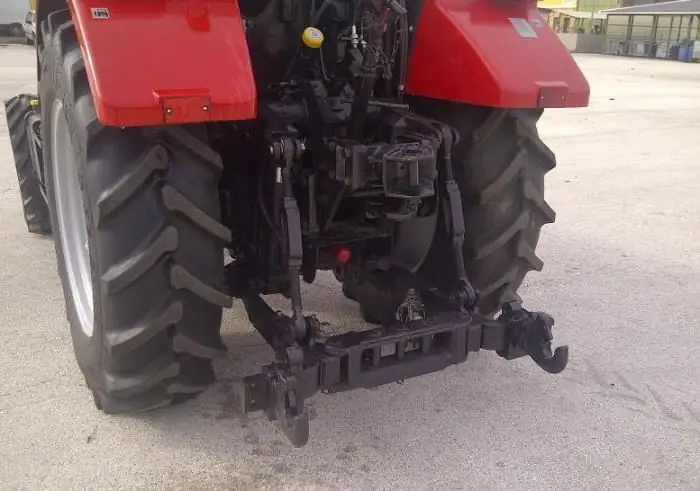
If you are looking for a tractor that would be an excellent assistant in gardening, but at the same time could easily start plowing a field or help in raising cattle, then the choice should fall on the MTZ-921 tractor. This model has been on the market for 17 years, and during this time it has managed to establish itself among farmers, gardeners and even winemakers
Fordson tractor: photo and description, specifications
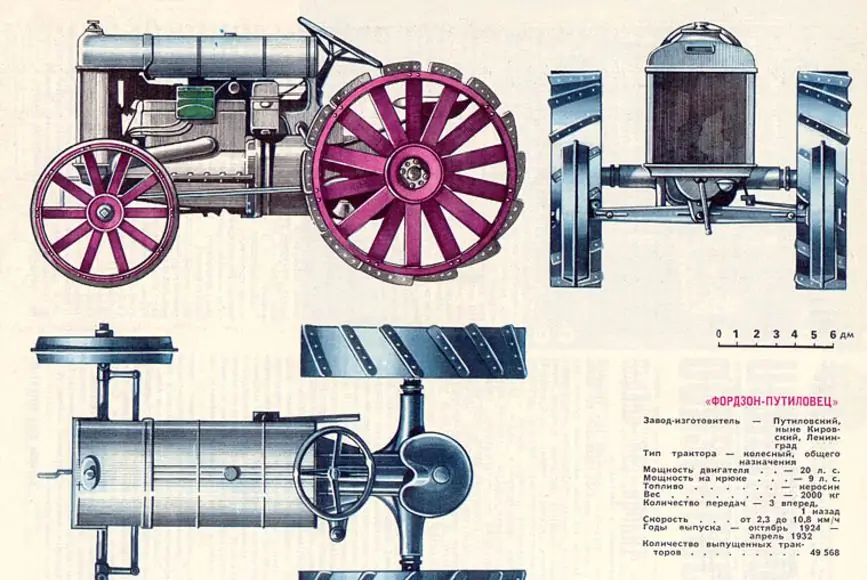
Tractor "Fordson": description, specifications, history of creation, features, photo. Tractor "Fordson Putilovets": parameters, interesting facts, manufacturer. How the Fordson tractor was created: production facilities, domestic development
Tractor "Belarus-1221": device, specifications, description and reviews
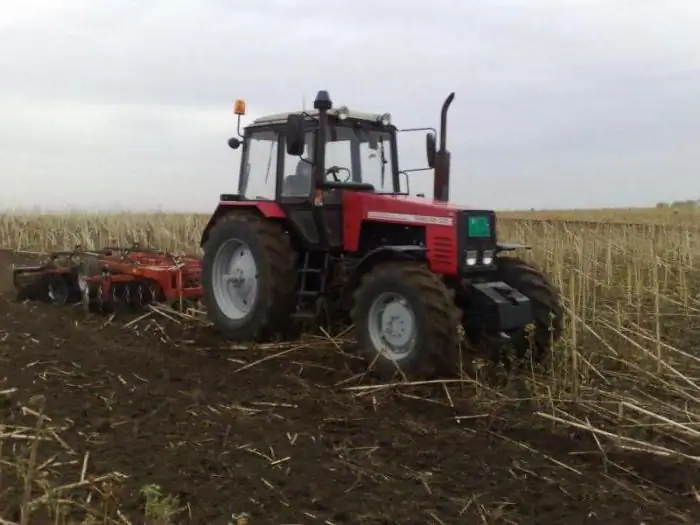
Agricultural work is very labor intensive and energy intensive. To obtain the desired harvest, farmers are forced to make simply enormous efforts. Therefore, the question of the mechanization of work in the fields today is particularly acute. One of the faithful assistants in solving many issues of the modern farmer is the tractor "Belarus-1221"
XTZ-150 tractor: specifications and description
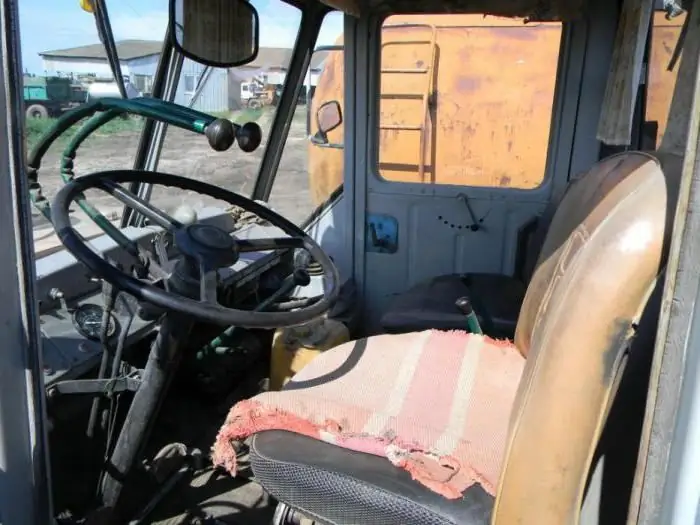
KhTZ-150: overview, characteristics, application, features, modifications. Tractor HTZ-150: power, parameters, service, reviews, photos

